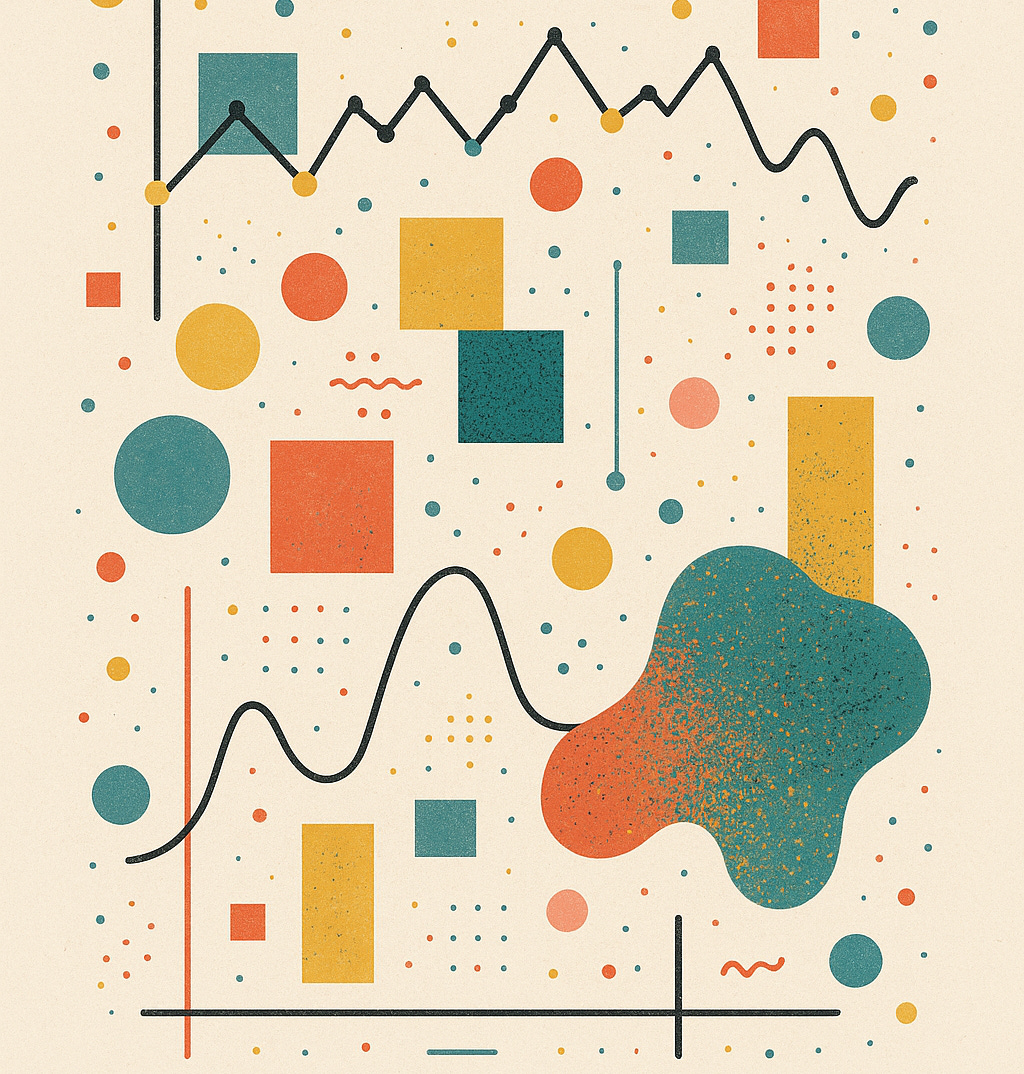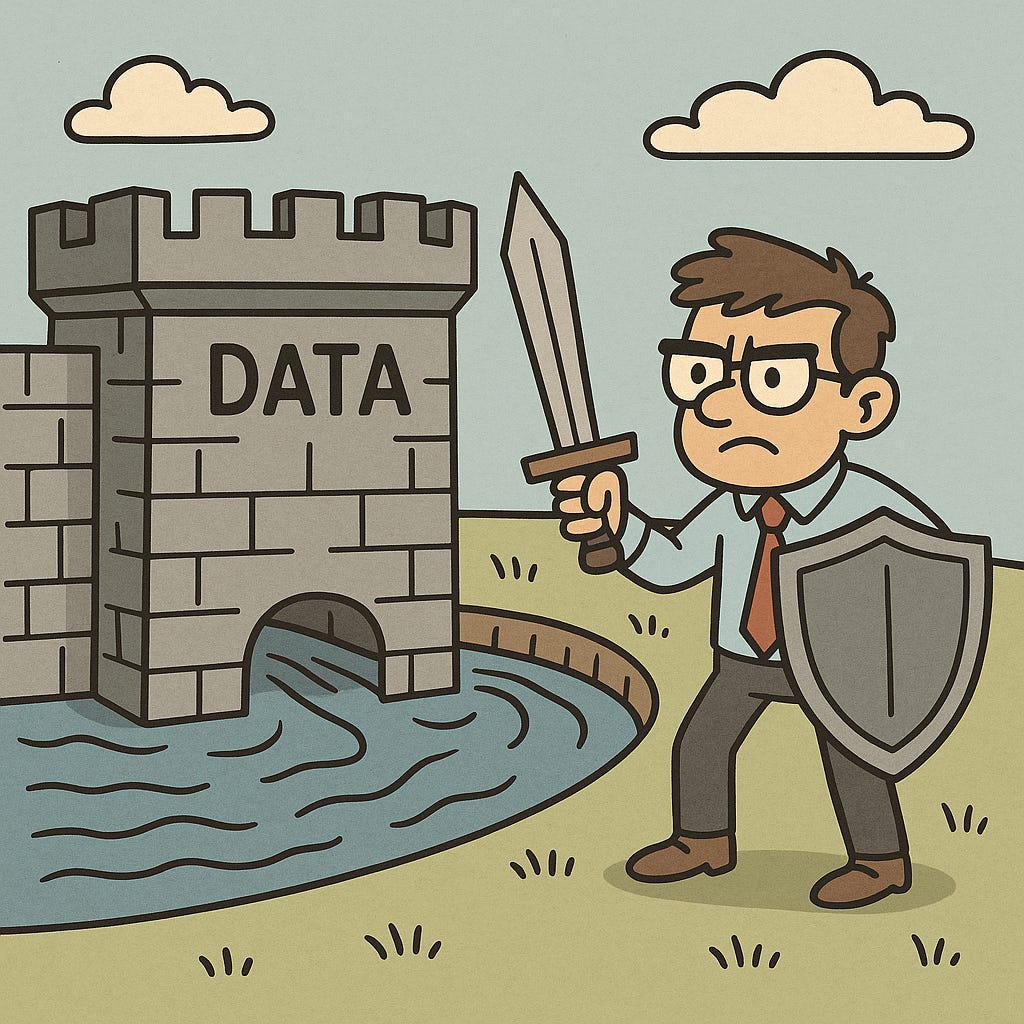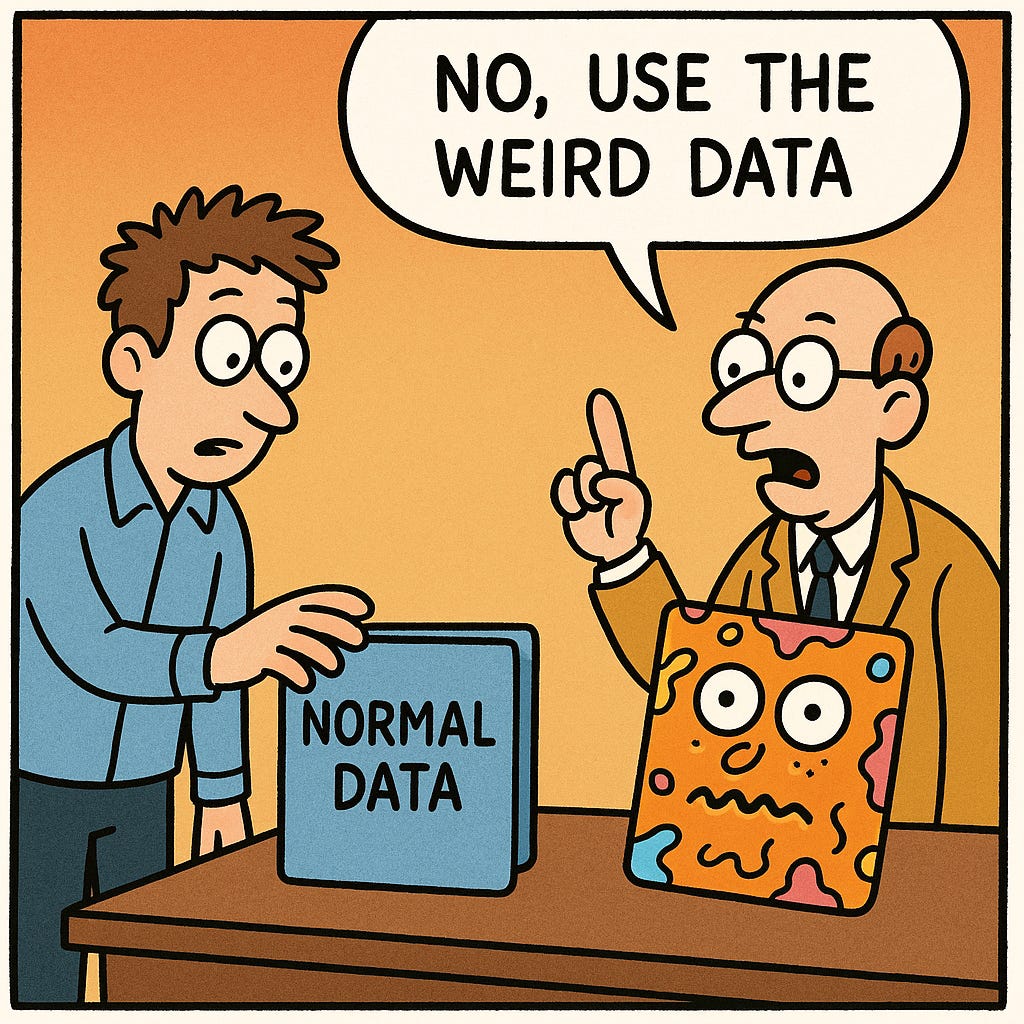Competitive advantage depends on your ability to make better decisions than your competitors. This requires either exploiting similar information more effectively than they do, or possessing unique datasets that create an information asymmetry in your favour.
This principle reflects a basic economic truth: in efficient markets, widely available information gets arbitraged away. When everyone has access to the same insights, no one maintains an advantage.
The real value lies in intelligence that others cannot replicate.
Data poor vs data rich
I spent about seven years advising companies on customer data strategy, when working at Experian. In that time I must have worked with several hundred organisations, on all sorts of data problems.
They had many and various challenges, but most shared the same fundamental question:
"How do we use our data to improve customer engagement?"
What fascinated me was their outcomes varied dramatically based on a key factor: the uniqueness of their information assets.
These brands fell into two categories:
🏚️ Data-poor companies relied heavily on third-party enrichment services, purchasing demographics, financial behaviours, and off-the-shelf consumer segments. These businesses lacked rich first-party data from direct customer interactions, making them dependent on the same (or very similar) information sources as their competitors.
🏰 Data-rich companies had built substantial first-party datasets through years of customer interactions. While they might supplement this with external data for completeness, their core intelligence came from sources that no competitor could access or replicate.
The performance gap
The performance gap between these groups was striking. Companies with unique data consistently surfaced insights unavailable to competitors, creating sustainable advantages in targeting and engagement.
To be fair, many data-poor organisations, were adept at using what limited insights they had (part of our service was to ensure this). However it is also fair to say they remained at a competitive disadvantage - in a commodity market for intelligence, where shared knowledge provided less differentiation.
This dynamic became particularly visible during the rise of targeted email marketing. As knowledge-poor companies invested heavily in demographic-based campaigns, effectiveness rates plummeted for affluent consumer segments. The reason being that the same people were being bombarded with identical targeting approaches for luxury goods, furniture, holidays, and other premium stuff.
A classic example of when everyone uses the same playbook - the playbook stops working.
A case study in weird data
Consider Netflix's recommendation engine versus traditional TV networks. While networks relied on Nielsen ratings and demographic data available to all competitors, Netflix collected granular viewing behaviours: what users watched, when they paused, what they skipped, how they browsed, and crucially, what they almost watched but didn't.
This "weird data" created insights no competitor could replicate. Netflix could predict what audiences might like, but also what they would actually finish watching. This information asymmetry enabled them to make content investment decisions that seemed counterintuitive but proved very successful.
Unique data creates unique insights, which enable unique strategies, which generate unique returns.
(The weirder the better)
The compound power of weird data
What makes unique data powerful is how it creates reinforcing cycles that strengthen over time. Tesla's Autopilot doesn't just benefit from having more driving data, it benefits from having more weird driving data. Every edge case, every unusual weather condition, every bizarre traffic situation that a Tesla encounters becomes part of a dataset that competitors with smaller fleets cannot match.
This creates "data network effects." Each additional data point doesn't just add linear value, it multiplies the value of existing data by providing new contexts and correlations. The weirder and more comprehensive the dataset, the more powerful these network effects become.
The Defensive Moat Strategy
Your competitive moat isn't built on what everyone knows, but on what only you know. As AI democratises analytical capabilities and cloud computing makes processing power abundant, advantage increasingly depends on having data nobody else can get.
I’m not going to attempt to create a ‘weird data framework,’ because we already have processes for managing data. However, when thinking about weird data, there are three things to consider.
🧐 Be intentional: this means designing business models and customer interactions specifically to generate unique data. This might involve creating new touchpoints with customers, or structuring partnerships that provide access to otherwise unavailable information.
🛡️ Platimum grade protection: prioritise both technical and strategic measures to prevent the loss or replication of unique datasets. This includes everything from robust cybersecurity to exclusive data partnerships to designing systems that make data extraction difficult or impossible.
🏃 Focus on activation means building organisational capabilities to actually leverage unique data for competitive advantage. Having unique data means nothing if you cannot effectively translate it into better products, services, or business decisions
Ok, this last point is a bit broad (just harness your data properly). But the point is knowing your mission-critical data and what it unlocks is vital to guide investment in, people, processes and tools. Sounds simple - but many organisations have no idea the potential power of their weird data.
Building your weird data strategy
For organisations looking to build unique data advantages, you need to think about both strategy and tactical execution. Start by auditing your current data collection through the lens of uniqueness. What information do you gather that competitors cannot easily replicate? What customer interactions, operational processes, or market positions give you access to distinctive data?
Next, consider what unique data you could collect but currently don't. What changes to your business model, customer interactions, or operational processes would generate valuable datasets? How can you create new touchpoints or measurement systems that provide insights unavailable elsewhere?
Finally, develop organisational capabilities to protect and leverage unique data effectively. This means investing in both technical infrastructure and human expertise to ensure that unique data translates into competitive advantage rather than just sitting unused in databases.
The future belongs to the weird
As traditional competitive advantages erode (patents expire, talent moves, capital flows globally, technology democratises), unique data creates compound advantages that strengthen over time. The most valuable datasets tomorrow will be those that emerge from unique business models, novel customer interactions, or processes that competitors literally cannot duplicate.
I believe the future will always belong to companies that can collect, protect, and leverage the weirdest, most unique data in their industries. As generic data sets cheapen and AI makes everything else a commodity, its the strange edge cases and proprietary datasets which will matter most.
The question isn't whether you have data. The question is whether you have data that nobody else does - and whether you know what to do with it.







